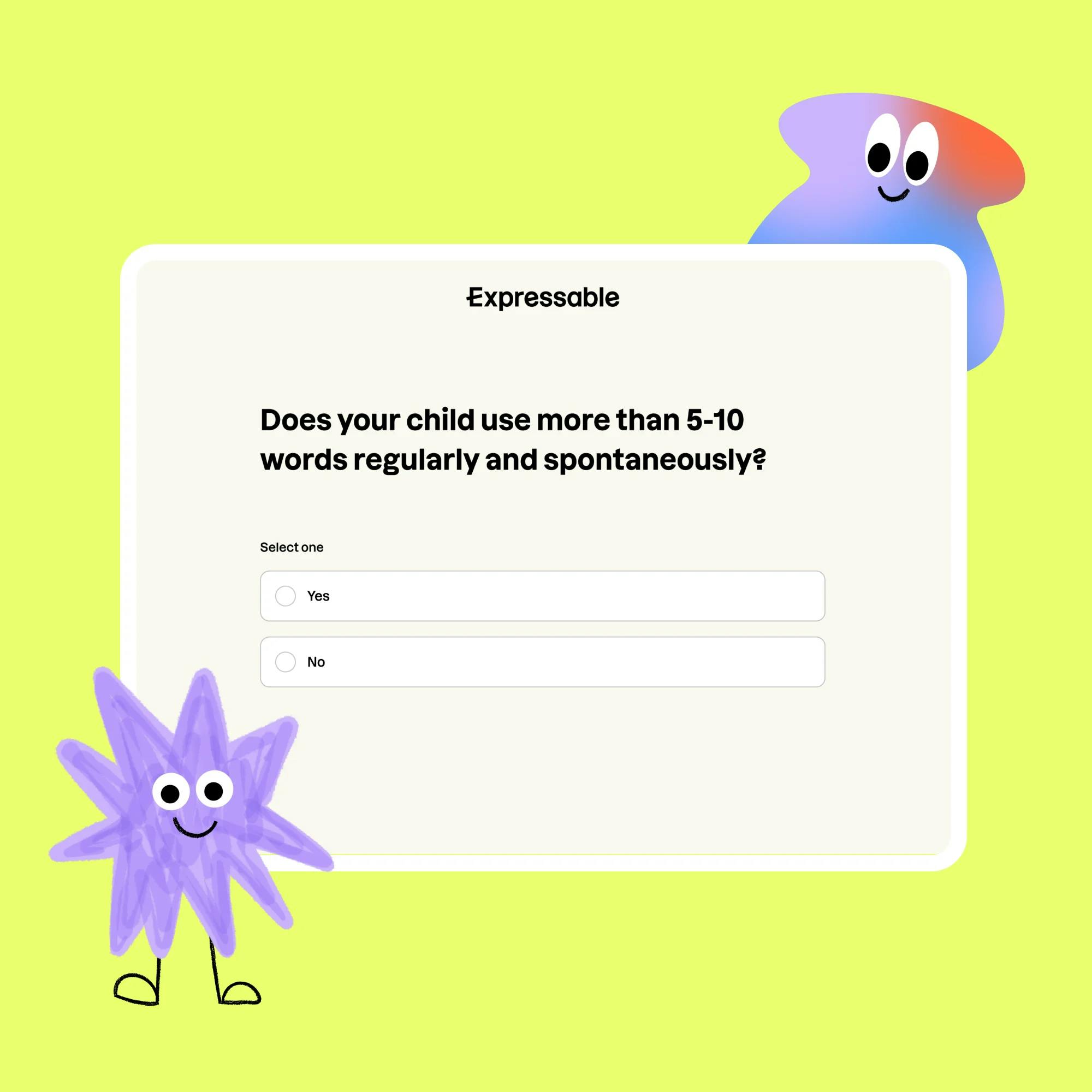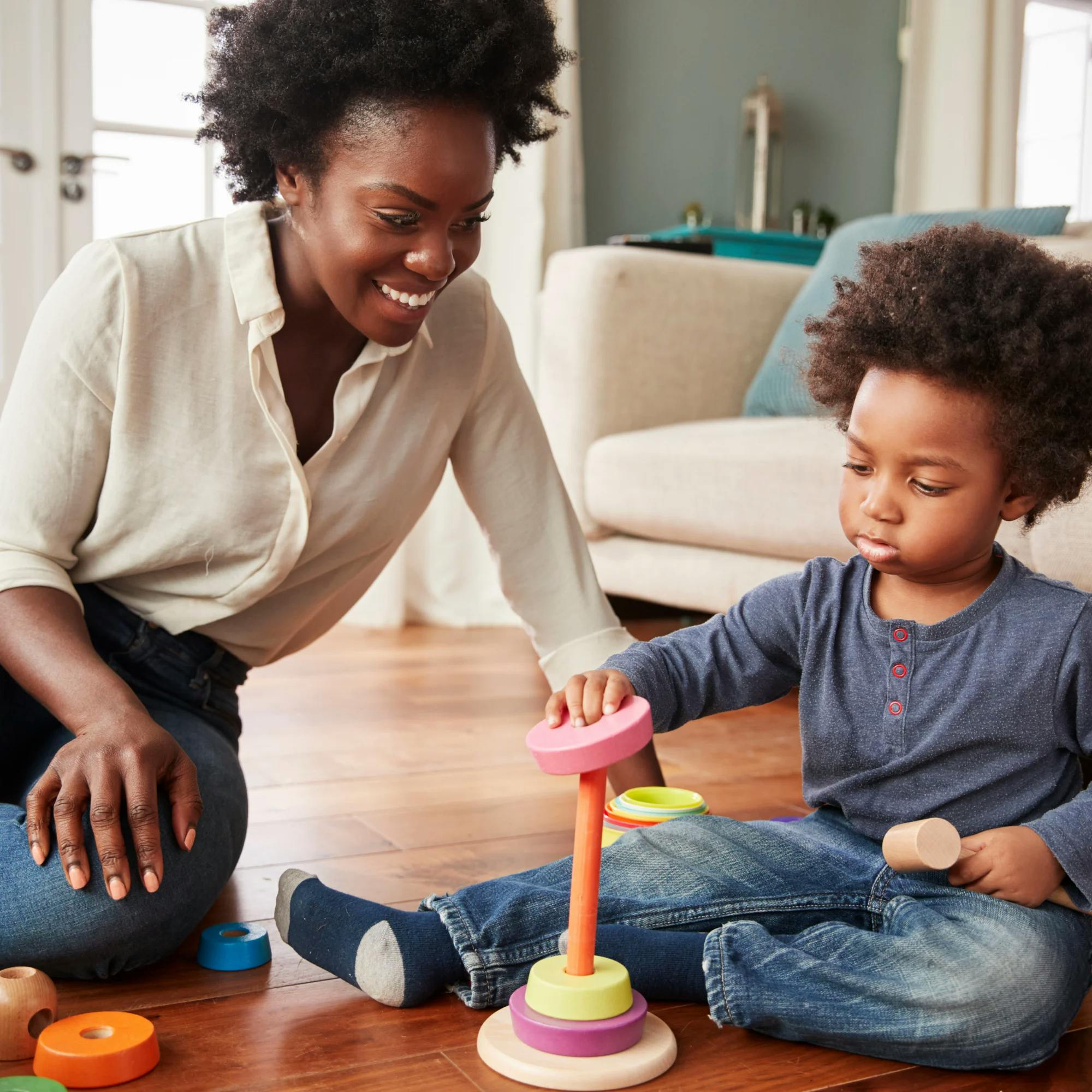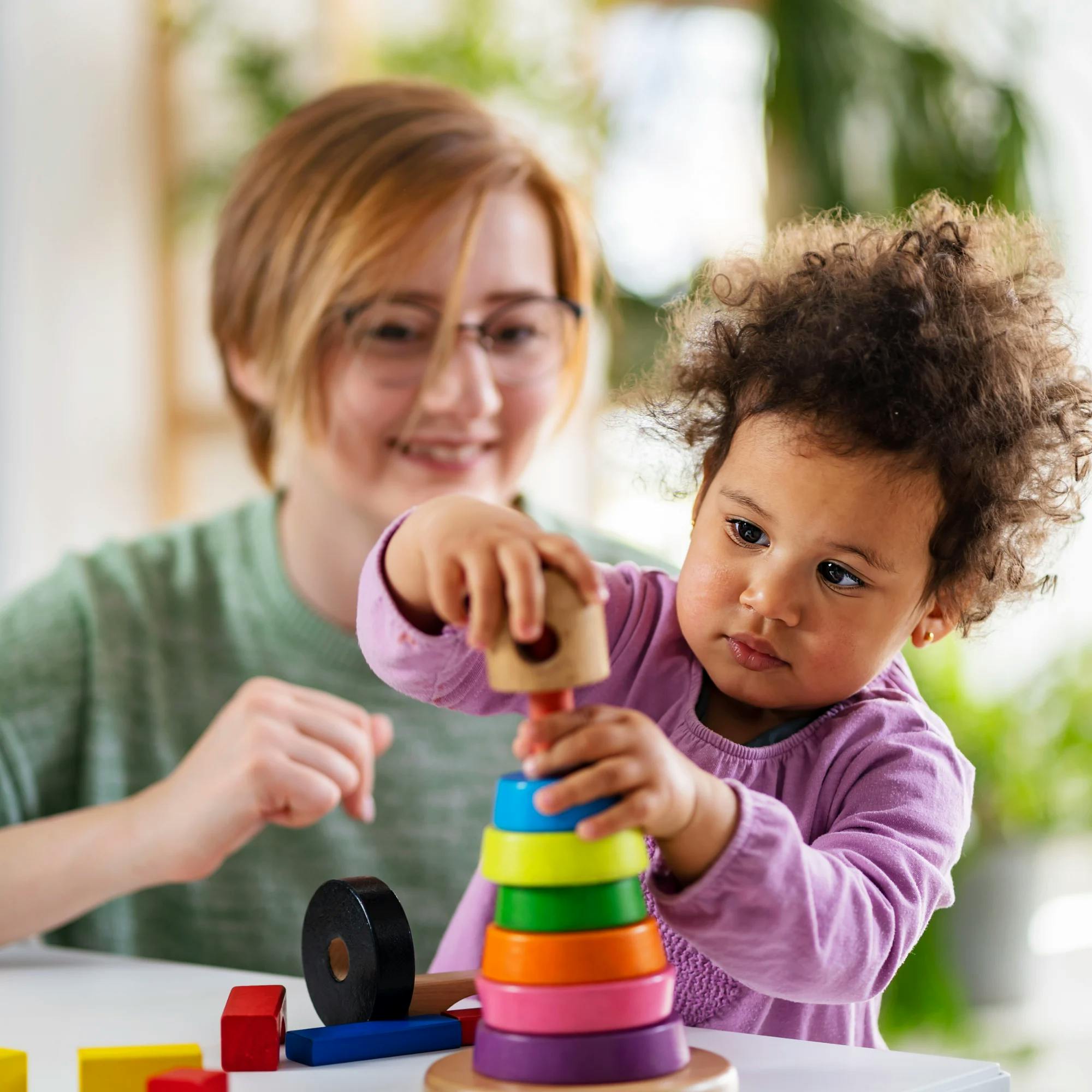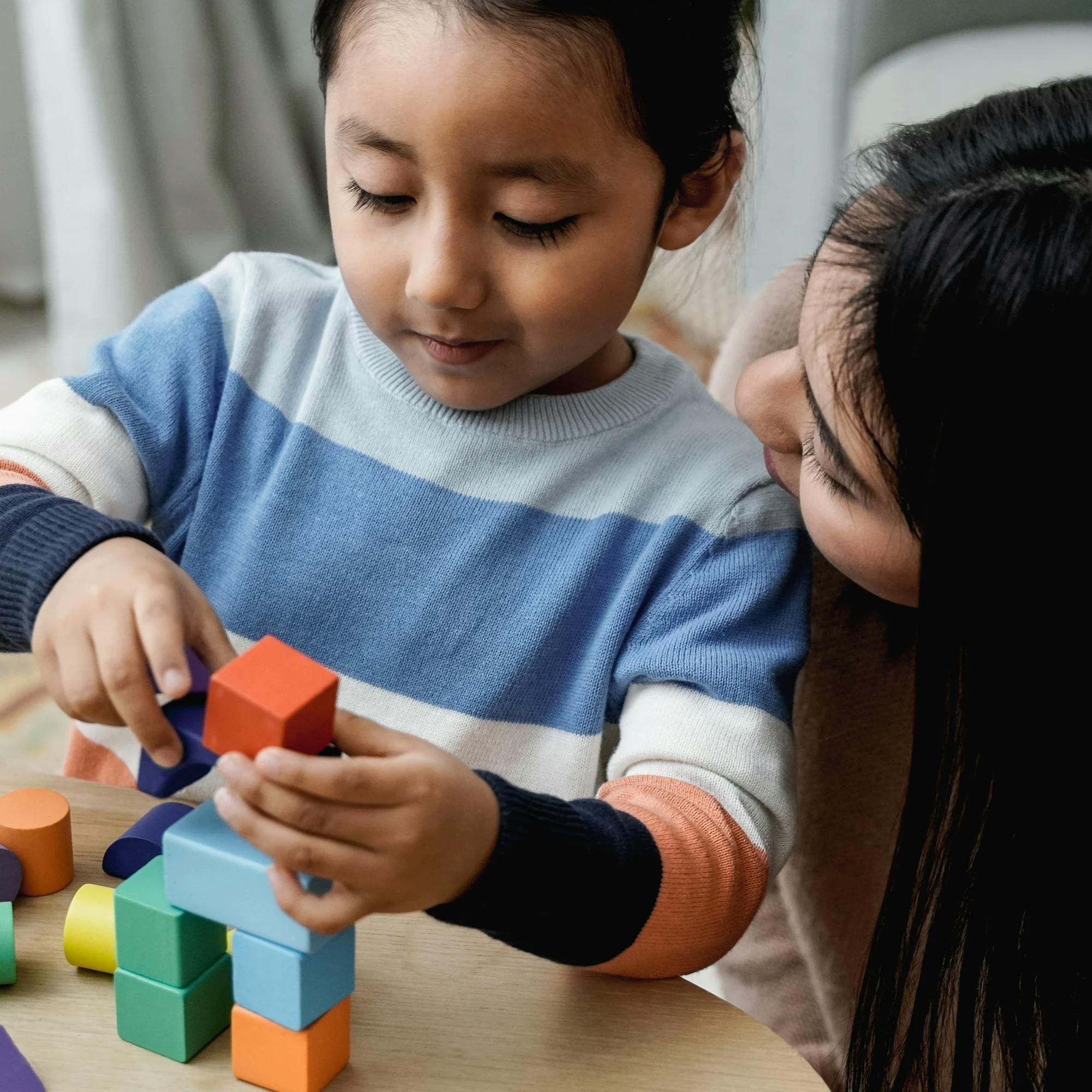
10 Tips to Improve Receptive Language for Children with Autism Spectrum Disorder (ASD)

Receptive language, which is how we interpret language and understand others, can often be a challenge for kids who have been diagnosed with autism. Children who struggle with receptive language can appear as if they aren't listening or responding to the simplest of instructions, which can be frustrating for parents.
Parents and caregivers often describe their kids as being content to play on their own, with behavioral issues emerging when asked to complete tasks or participate in activities that are more structured. As a child gets older, these demands only seem to increase and compound that frustration.


How can you improve receptive language in your child?
First and foremost, it’s important to follow your instincts. If your child appears to not respond to their name, becomes easily frustrated when their solitary play is interrupted, and needs extra help to follow directions, then they may have receptive language concerns related to autism.
Often, there are techniques a family can incorporate that will increase language from an early age. Here are simple ways to expand your child's receptive language in those crucial early developmental years.
1 Don’t ignore your child's lack of language skills
You may be thinking: “But my child is really happy playing on their own all day. They can just find their favorite videos online.”
While they may be content watching videos all day or doing solitary play, what happens when they get to school and are placed in a structured environment that includes verbal instruction? Working on emerging language skills during those crucial years of 0 to 3 helps prepare a child for the rest of their lives.
2 Keep your language simple
Everything is new to a child. They learn language by imitating your actions and following your models.
Many parents think that by modeling more complex “adult” language, their child is more likely to begin using that language themselves. However, complex language may be too challenging for a child to interpret. In other words, keep it simple. Phases like “Throw the ball” or “Time for bath” are clear and direct, especially when combined with a gesture, and they help to reinforce your message.


3 Use visual cues
A autistic child might appear to not be listening and often has difficulty maintaining eye contact. However, visual cues can be a great way to reinforce receptive language.
If your child is not motivated by listening to your words, try combining words with the actual object you’re referencing--it can make a world of difference. For instance, giving a child a choice of two objects, and naming them as you bring them close to your mouth, reinforces the names of these objects so your child can better communicate their needs and wants. Try saying: “Would you like the crayon or the marker?” and then stating “You wanted the marker!” after they’ve made a selection.


4 Read lots of books
Not only is reading a great activity to share with your child, books go a long way in improving receptive language. For an emerging language user, books with identifiable pictures that can be easily labeled are useful. Books with tactile features can also engage a young child with autism.
Trying picking objects on each page to label and turn it into a game of “I Spy.” For example, you could say, “Do you see the cow that says moo?” or “Can you show me the cookie?” Incorporating this activity into your daily routines can also encourage early literacy skills as you work to increase receptive language.
Another helpful tip for expanding your child’s attention is to combine activities like reading with some sort of sensory stimulation. For example, this can include giving your child a bin of pasta or beans to put their hands or feet in while reading a book.
5 Use your child’s name often
Many parents of autistic children report that they don’t respond to their name. Using their name often can reinforce their awareness and, in turn, motivate them to begin responding to their name when called. Try saying, “All done with your snack, Kate?” or “Do you want open, Isaac?” It may sound redundant, but it serves to strengthen a child’s recognition of their own name, especially when combined with gestures.
6 Make your child the star of their own movie
We want to provide kids with a language-rich environment. Even if a child prefers solitary play, this is a great opportunity to use language to describe their actions. Think of it as narrating a movie.
You might say, “Oh, you’re stacking the blocks. Uh oh, they fell over! Can you try again? Stack them up, up up!” Or, if your child is watching something you’re doing, say, “I’m stirring the soup. I’m pouring it into a bowl. It is hot!”
Again, by keeping it simple, repetitive, and linked to visual cues, autistic children can often understand the meaning behind the words more easily and without the pressure of having to complete an adult-directed activity.
7 Play music
While you might be losing your mind hearing "Baby Shark" on repeat, believe it or not, songs like these are a great way to increase receptive language. These types of childhood songs are simple and often use gestures and repetition to increase language acquisition--which is exactly what we want!
Sure, listening to “Wheels on the Bus” multiple times in a row might not be your idea of fun, but think of all the language your child can learn by participating: “The doors on the bus go open and shut,” or “The people on the bus go up and down.”
By incorporating gestures, a child can learn functional language as well, such as “open,” “shut,” “up,” and “down.” This can serve as the foundation for understanding common verbal directions throughout the day. And for an autistic child, it can be a great way to tap into their receptive language skills.


8 Confirm the sounds your child hears
We live in a world that is rich with sounds. Taking the time to confirm what your child hears is an easy way to increase language. For example, you could say, “I hear a dog bark! Did you hear that? Woof woof,” and then point to the dog in question.
Sirens, airplanes, and babies crying are all opportunities to associate sound with language and promote joint attention. Again, this helps build awareness and use every moment throughout the day as a language-building opportunity.
9 Focus on the fundamentals
Functional language is the language that we use in day-to-day situations. Examples of functional language include common objects, people in your family, favorite food, toys, etc. Labeling colors and letters, while useful later on, are not as helpful when a parent wants their child to follow simple directions, such as “Get your shoes.”
Starting with the basics, and building vocabulary from there, can help your child master language needed for daily routines. This makes everyone’s life that much easier.
10 Don’t be afraid to be silly
Children learn language through play. Getting down on their level, playing alongside them, or letting them take the lead during an activity can motivate your child to participate.
These play activities could include rolling a ball or car back and forth. To build receptive language, you might say, “Here comes the car, beep beep!” or “I bounce the ball to you.” These types of simple phrases engage children in turn taking, listening, and learning the names of objects.
By narrating each turn, and using gestures and simple language, you can provide wonders when it comes to increasing your child's receptive language skills. An important note: We believe that when speaking about any community as a whole, the best approach is to prioritize that community’s voices, needs, and preferences. Within the larger autism community, the current language preference is identity-first, which is why we use that language in our content. Expressable is committed to listening to and learning from the populations we serve. If and when their preferences change, we’ll adjust our approach accordingly.












